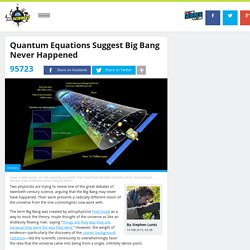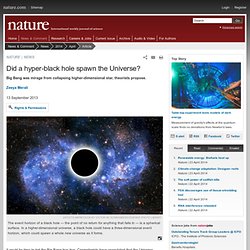

The Fermi Paradox. PDF: We made a fancy PDF of this post for printing and offline viewing.

Buy it here. (Or see a preview.) Everyone feels something when they’re in a really good starry place on a really good starry night and they look up and see this: Some people stick with the traditional, feeling struck by the epic beauty or blown away by the insane scale of the universe. Personally, I go for the old “existential meltdown followed by acting weird for the next half hour.” Physicist Enrico Fermi felt something too—”Where is everybody?” A really starry sky seems vast—but all we’re looking at is our very local neighborhood. Galaxy image: Nick Risinger When confronted with the topic of stars and galaxies, a question that tantalizes most humans is, “Is there other intelligent life out there?”
As many stars as there are in our galaxy (100 – 400 billion), there are roughly an equal number of galaxies in the observable universe—so for every star in the colossal Milky Way, there’s a whole galaxy out there. 1. 2. Magneticum Pathfinder: Evolution of the universe in unmatched precision: New most comprehensive hydrodynamical simulation of the universe's visible structure. Within modern cosmology, the Big Bang marks the beginning of the universe and the creation of matter, space and time about 13.8 billion years ago.

Since then, the visible structures of the cosmos have developed: billions of galaxies which bind gas, dust, stars and planets with gravity and host supermassive black holes in their centres. But how could these visible structures have formed from the universe's initial conditions? To answer this question, theoretical astrophysicists carry out cosmological simulations. They transform their knowledge about the physical processes forming our universe into mathematical models and simulate the evolution of our universe on high-performance computers over billions of years. Quantum Equations Suggest Big Bang Never Happened. Two physicists are trying to revive one of the great debates of twentieth-century science, arguing that the Big Bang may never have happened.

Their work presents a radically different vision of the universe from the one cosmologists now work with. The term Big Bang was created by astrophysicist Fred Hoyle as a way to mock the theory. Hoyle thought of the universe as like an endlessly flowing river, saying “Things are they way they are, because they were the way they were.” Did a hyper-black hole spawn the Universe? The event horizon of a black hole — the point of no return for anything that falls in — is a spherical surface.

In a higher-dimensional universe, a black hole could have a three-dimensional event horizon, which could spawn a whole new universe as it forms. It could be time to bid the Big Bang bye-bye. Cosmologists have speculated that the Universe formed from the debris ejected when a four-dimensional star collapsed into a black hole — a scenario that would help to explain why the cosmos seems to be so uniform in all directions.
The standard Big Bang model tells us that the Universe exploded out of an infinitely dense point, or singularity. But nobody knows what would have triggered this outburst: the known laws of physics cannot tell us what happened at that moment. “For all physicists know, dragons could have come flying out of the singularity,” says Niayesh Afshordi, an astrophysicist at the Perimeter Institute for Theoretical Physics in Waterloo, Canada. LzaMeXm.gif (GIF Image, 300 × 300 pixels) Inflationary Universe data in question, but cheer up, there are cures for aging - On Science Blogs. Hello there!

If you enjoy the content on On Science Blogs, consider subscribing for future posts via email or RSS feed. Has BICEP2 lost its muscle? Data claiming support for the inflationary theory of the Universe’s beginnings were released at a much ballyhooed press conference in March. (Cosmic inflation is the idea that the Universe expanded spectacularly right after the infinitesimal point that was the Big Bang.) When I wrote about the announcement here at the time, I said I was surprised at the wholehearted embrace of a report that was so clearly contingent, tentative, preliminary.
The claims were based on observations of cosmic microwave background radiation left over from the Big Bang, observations made by the BICEP2 telescope at the South Pole. We should know fairly soon, within the next year or two, whether what BICEP2 saw was the real thing. Take a Psychedelic Trip through a World of Morphing Fractals by Alexandre Lehmann. No, you’re not on drugs, or maybe you are, in which case you might want to wait a while before watching this.

Overstepping Artifacts is the latest fractalized music video from French animator and musician Alexandre Lehmann (aka Ricardo Montalban or Zzzzra) as part of his ongoing Musicians with Guns series. The clip is the definition of ‘otherworldly,’ and was created using special fractal software that results in morphing forms that seem part organic and part architectural. Overstepping Artifacts is a follow-up to his 2011 video Astroblast which is similar in tone but visual quite different and also worth a watch. Lehmann talks a bit about his process in a 2012 interview over on Empty Kingdom. Best viewed HD, full-screen, headphones, etc. Musicians With Guns - Astroblast.
Astronomy.